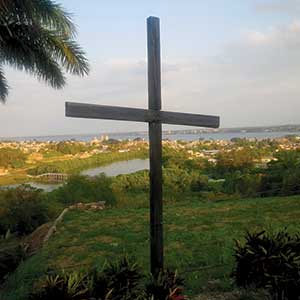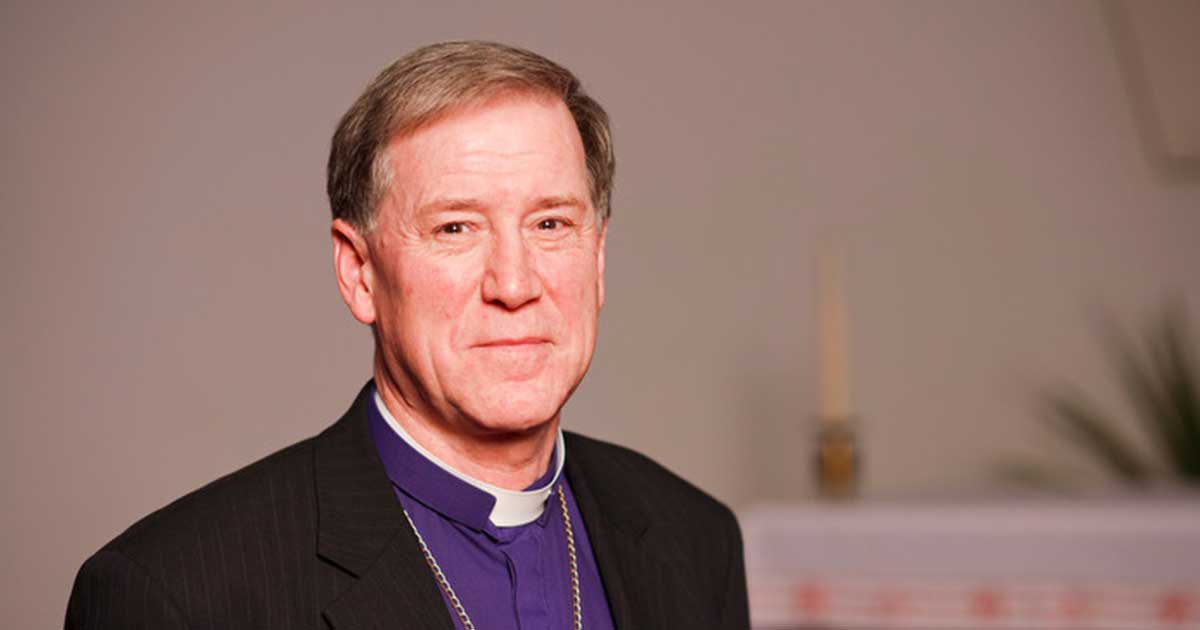As we make our way through Holy Week – that time of such wondrous love, when for my sake and that of all the world Christ gave himself to death, there are two moments when I am invariably ‘undone’.
One of those moments is on Maundy Thursday. We will have recalled the Last Supper and the conversation in that Upper Room of long ago. We will have received the Blessed Sacrament with those immortal words, “The body of Christ, broken for you. The blood of Christ, shed for you.” We will have no sooner given thanks for this holy mystery when we behold the very altar around which we celebrated being stripped and laid bare.
Reminded that “when they had sung the hymn, they went out to the Mount of Olives” (Mark 14:26) we too “Go to dark Gethsemane”. We recall our Lord’s agony and arrest, his prayer and his passion. We remember too how “all of them (disciples) deserted him and fled”. (Mark 14:50) In the chaos of that moment we are left to consider how we too forsake and flee from him – when his teaching is too hard to embrace, his gospel too hard to embody in the manner of our living. We leave the church in silence. For those of a truly humble and contrite heart, it can be a rather restless night.
The other moment is on Good Friday. We will have read The Passion of the Lord and sung a hymn calling to remembrance his wounds for our redemption. As the prophet said of The Suffering Servant of God, “But he was wounded for our transgressions, crushed for our iniquities; upon him was the punishment that made us whole, and by his bruises we are healed.” (Isaiah 53:5)
We will have been drawn into The Solemn Intercession, praying for ourselves, for the Church and for the whole world. And just when we think that liturgy is coming to its conclusion, there is a procession. It may be but one person – perhaps the priest, perhaps the deacon, perhaps someone else representing the community of the baptized – bearing a cross, its arms across their shoulder, its foot dragged behind. Given the proportions of the cross, its height and its weight, this procession may be the loving labour of a band of men and women, young and old.
 The cross that is borne may be one reserved for use on this day only. It may be finished and lacquered, or it may be rough and rugged. In some places it is made from the trunks of the trees that adorned the sanctuary as we celebrated The Nativity of the Lord, now bound together as we remember His Passion and Death. In yet other places it may be limbs of trees broken and fallen through the storms of winter tied together in a form that is so utterly stark.
The cross that is borne may be one reserved for use on this day only. It may be finished and lacquered, or it may be rough and rugged. In some places it is made from the trunks of the trees that adorned the sanctuary as we celebrated The Nativity of the Lord, now bound together as we remember His Passion and Death. In yet other places it may be limbs of trees broken and fallen through the storms of winter tied together in a form that is so utterly stark.
Once the cross has been raised in the sight of all the people, the celebrant says “This is the wood of the cross, on which hung the Saviour of the world” and the people respond, “Come let us worship”. What follows is a deep and prolonged silence.
And then it starts – a procession, like no other. All one can hear is the sound of footsteps over a floor of wood or stone. Some are quick, some are slower, some are a shuffle. While many come on their own, some come with the support of another’s arm. All are coming to venerate the Cross, each in their own way. Some stand before it. Others kneel as they are able. Some reach out to touch it and then trace its sign over their bodies. Others lean forward to kiss it.
Some remain before the Cross for a few minutes. Others linger just a little longer. For some it may be a time of deeply personal prayer for forgiveness for some sin that has weighed them down for years, some sin they need to lay down and leave at the foot of the Cross. For some it may be a prayer for reconciliation with someone from whom they have been estranged. For others it may be a prayer for reconciliation within families, between peoples, among the nations. For others it may be a prayer for the Church itself that it be reformed and renewed and graced afresh in all the values and wonders of the Gospel it proclaims.
While many come forward for this act of devotion, a few because of infirmity, or reasons unknown to any of us, join it from their places. Their devotion is no less sincere than anyone else’s. For however we keep this moment, we enter into it inspired by St. Paul’s teaching, “For some the message about the cross is foolishness, to those who are perishing, but to us who are being saved it is the power of God.” (1 Corinthians 1:18)
When the Veneration of the Cross is completed, the people join in singing a hymn extolling its glory. Like Isaac Watts’ “When I survey the wondrous cross”, it may call each one to a renewed consecration of their life in the love of The Crucified. Like Venantius Fortunatus’ “Sing my tongue, the glorious battle”, it may draw the entire community into a renewal of its song and service in the name of The Crucified.
This liturgy concludes with the anthem the Church has sung for centuries,
“We adore you, O Christ, and we bless you, because of your holy cross you have redeemed the world.”
Thanks be to God.
Interested in keeping up-to-date on news, opinion, events and resources from the Anglican Church of Canada? Sign up for our email alerts .

